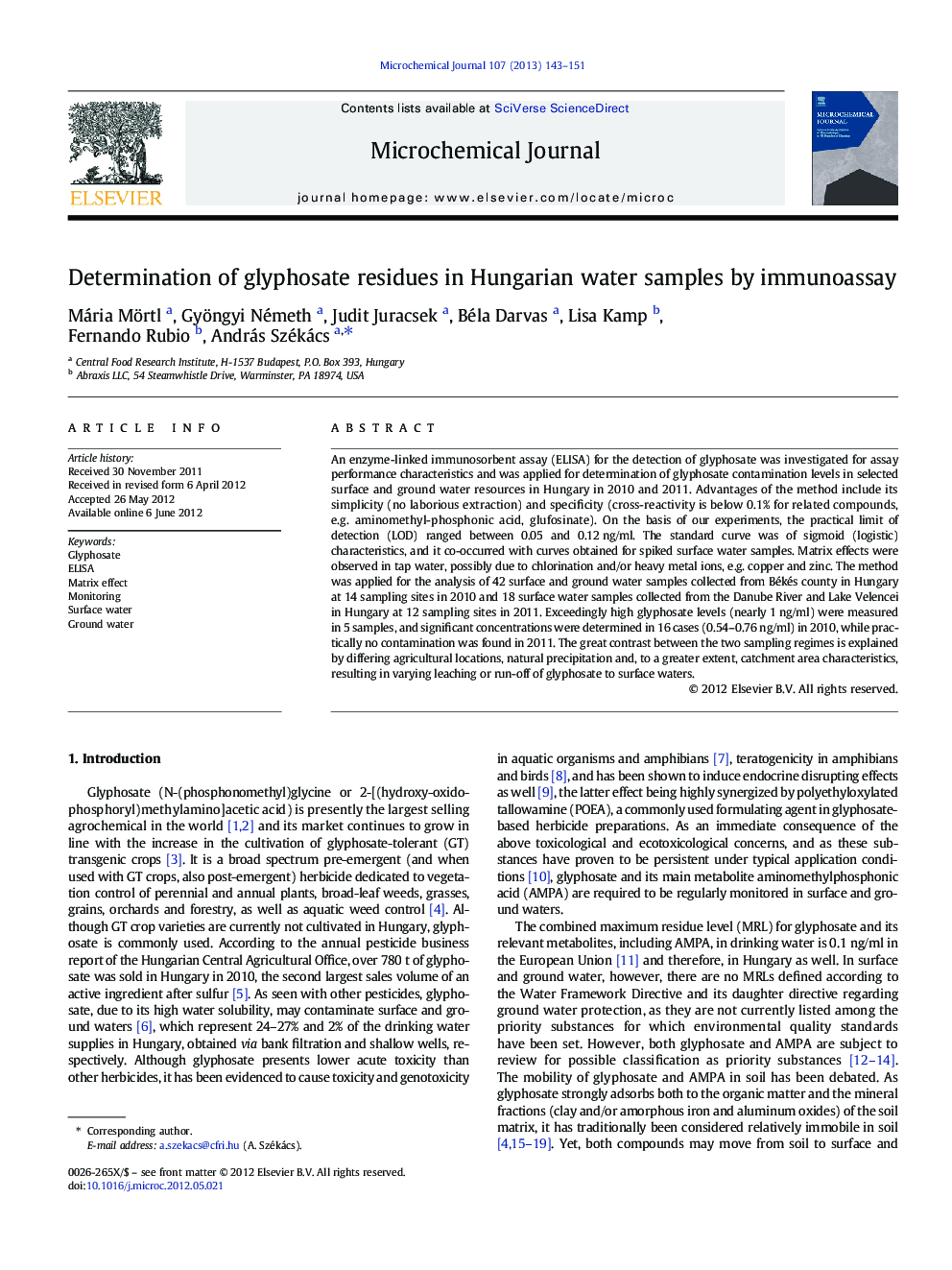| Article ID | Journal | Published Year | Pages | File Type |
|---|---|---|---|---|
| 1227869 | Microchemical Journal | 2013 | 9 Pages |
An enzyme-linked immunosorbent assay (ELISA) for the detection of glyphosate was investigated for assay performance characteristics and was applied for determination of glyphosate contamination levels in selected surface and ground water resources in Hungary in 2010 and 2011. Advantages of the method include its simplicity (no laborious extraction) and specificity (cross-reactivity is below 0.1% for related compounds, e.g. aminomethyl-phosphonic acid, glufosinate). On the basis of our experiments, the practical limit of detection (LOD) ranged between 0.05 and 0.12 ng/ml. The standard curve was of sigmoid (logistic) characteristics, and it co-occurred with curves obtained for spiked surface water samples. Matrix effects were observed in tap water, possibly due to chlorination and/or heavy metal ions, e.g. copper and zinc. The method was applied for the analysis of 42 surface and ground water samples collected from Békés county in Hungary at 14 sampling sites in 2010 and 18 surface water samples collected from the Danube River and Lake Velencei in Hungary at 12 sampling sites in 2011. Exceedingly high glyphosate levels (nearly 1 ng/ml) were measured in 5 samples, and significant concentrations were determined in 16 cases (0.54–0.76 ng/ml) in 2010, while practically no contamination was found in 2011. The great contrast between the two sampling regimes is explained by differing agricultural locations, natural precipitation and, to a greater extent, catchment area characteristics, resulting in varying leaching or run-off of glyphosate to surface waters.
► An enzyme-linked immunosorbent assay (ELISA) for the herbicide active ingredient glyphosate was investigated. ► The ELISA was directly applicable in surface water (limit of detection: 0.05-0.12 ng/ml), but not in tap water. ► The method was used for determination of glyphosate in surface and ground water in two regions in Hungary in 2010 and 2011. ► Medium/high levels (up to 1 ng/ml) were found at agricultural areas (2010), and no glyphosate in the Danube region (2011). ► Contamination differences are explained by natural precipitation resulting in varying leaching or run-off of glyphosate.
